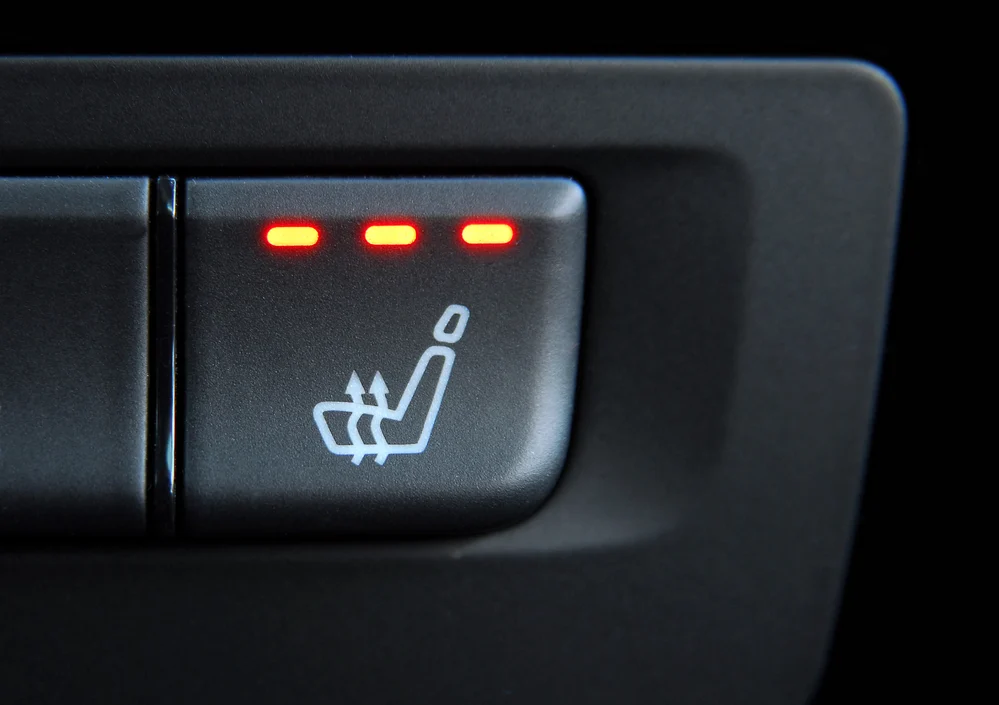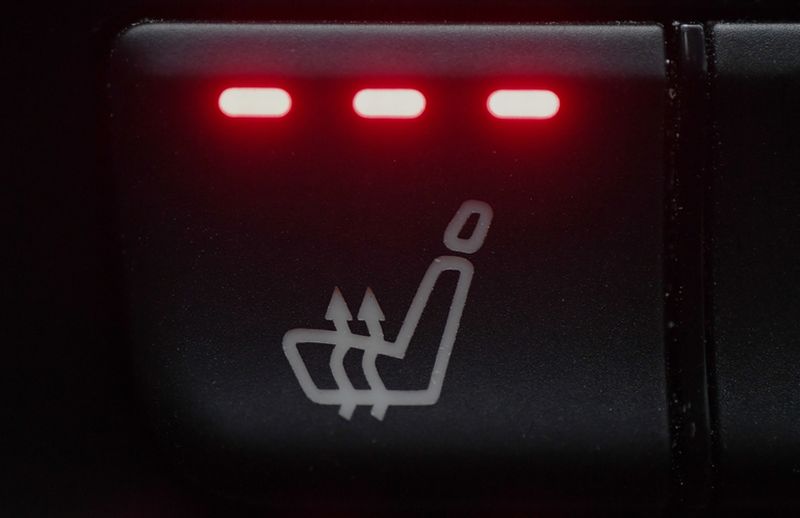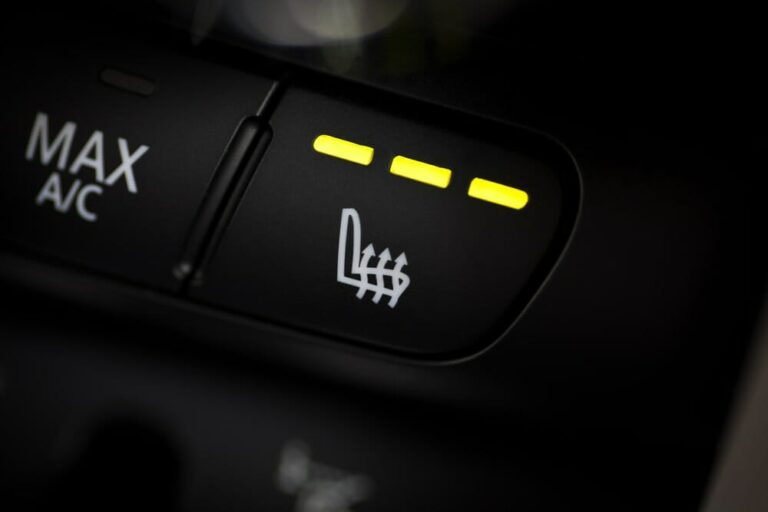Heated seats in vehicles typically do not use fuel directly. Instead, they are powered by the vehicle’s electrical system. When you turn on the heated seats, they use electric heating elements to generate warmth. The energy for this comes from the vehicle’s battery, which is charged by the alternator while the engine is running.
While heated seats themselves don’t consume fuel, it’s worth noting that using electrical components in a vehicle, including heated seats, can have a minor impact on fuel efficiency. This is because the alternator, which generates electrical power, is driven by the engine, and using electrical components places a small additional load on the engine. However, this impact is usually negligible compared to other factors affecting fuel efficiency.
How Do Heated Seats Work Electrically?

Heated seats in vehicles work electrically by utilizing heating elements embedded within the seat cushion or backrest. These heating elements are typically made of a conductive material, such as carbon fiber or a combination of metallic alloys, which generate heat when an electric current passes through them. Here’s a general overview of how heated seats work:
Heating Elements
The seat contains a network of thin heating elements that are distributed evenly across the surface. These elements are usually integrated into the seat cushion and backrest, and they are designed to provide uniform heating.
Power Source
Heated seats are connected to the vehicle’s electrical system, usually through a dedicated circuit. The power for the heating elements is supplied by the vehicle’s battery.
Control Module
There is a control module or switch located within the vehicle’s interior that allows the driver and passengers to adjust the heat settings. This module might include a thermostat to regulate the temperature and prevent the seat from becoming too hot.
Wiring
Electrical wiring connects the heating elements to the control module and power source. The wiring is insulated to prevent any safety hazards and to protect the components from wear and tear.
Switch and Settings
The driver or passenger can typically control the heating level through a switch or button on the vehicle’s dashboard or the side of the seat. Different settings allow users to choose their preferred level of warmth.
Temperature Regulation
Some heated seats come with a temperature sensor or thermostat to maintain a consistent temperature. The sensor measures the seat’s temperature and adjusts the power supplied to the heating elements accordingly.
Safety Features
Most heated seat systems have built-in safety features, such as an automatic shutoff after a certain period or temperature limit to prevent overheating. This ensures that the seat remains at a comfortable and safe temperature.
What Is the Energy Source for Heated Seats?
The energy source for heated seats in vehicles is typically the vehicle’s electrical system, powered by the car’s battery. Here’s how it generally works:
Vehicle Battery
The primary source of power for heated seats is the vehicle’s battery. The battery provides electrical energy to various components of the car, and heated seats are one of the accessories that draw power from it.
Dedicated Circuit
Heated seats are connected to the vehicle’s electrical system through a dedicated circuit. This circuit allows the flow of electrical current from the battery to the heating elements in the seats.
Wiring
Electrical wiring runs from the battery to the heated seats, providing a pathway for the electrical current. The wiring is designed to be safe and well-insulated to prevent any electrical hazards.
Control Module
There is a control module or switch inside the vehicle’s interior that allows the driver and passengers to turn the heated seats on or off and adjust the temperature settings. This control module is part of the overall system that regulates the flow of electricity to the heating elements.
Heating Elements
The heating elements, which are usually made of conductive materials like carbon fiber or metallic alloys, generate heat when an electric current passes through them. These elements are embedded within the seat cushion or backrest.
How Does the Use of Heated Seats Impact Fuel Efficiency?

The impact of using heated seats on fuel efficiency is generally considered to be minimal. Heated seats in vehicles are powered by the electrical system, drawing energy from the car’s battery. Unlike traditional heating systems that rely on the engine’s heat, electrically heated seats do not directly consume fuel.
However, it’s important to note that the vehicle’s alternator, which is responsible for charging the battery and powering the electrical components, is connected to the engine. When you use heated seats, the alternator may need to work slightly harder to generate the additional electrical power required. This increased load on the alternator can lead to a marginal increase in fuel consumption.
The actual impact on fuel efficiency will depend on several factors, including the efficiency of the vehicle’s electrical system, the duration and intensity of heated seat usage, and the overall condition of the vehicle’s charging system.
In practical terms, the effect of using heated seats on fuel efficiency is likely to be minimal and may not be noticeable in day-to-day driving. If you are concerned about maximizing fuel efficiency, it’s a good practice to use electrical accessories judiciously and avoid unnecessary idling, as idling does consume fuel.
Keep in mind that advancements in vehicle technology, including more efficient alternators and electrical systems, contribute to minimizing the impact of accessories like heated seats on fuel efficiency. If you’re interested in specific details for your vehicle, consulting the owner’s manual or contacting the manufacturer can provide more tailored information.
FAQ’s
Do seat warmers use a lot of electricity?
Heated seats use moderate electricity, but their power consumption is generally considered reasonable.
Do heated seats drain EV battery?
Heated seats can contribute to battery drain in electric vehicles, but the impact is usually minor compared to other energy-intensive components.
Do heating pads waste electricity?
Heating pads consume electricity, but their efficiency varies. Modern heating pads often have features to optimize energy usage.
Are heated seats more efficient?
Heated seats are generally efficient for localized warmth, consuming less energy than heating an entire vehicle cabin.
Do heated seats also cool?
Heated seats are designed for warmth, but some vehicles offer ventilated or cooled seats as a separate feature for cooling comfort.
Final Words
Heated seats in cars use electricity from the vehicle’s battery, not fuel. The electric heating elements warm the seats, and the energy comes from the alternator, which charges the battery while the engine is running.
While using heated seats may have a small impact on fuel efficiency due to the added load on the alternator and engine, it is generally considered negligible compared to other factors affecting fuel consumption. Overall, heated seats provide comfort without directly using fuel.

